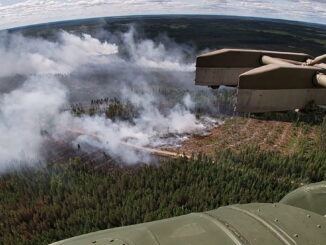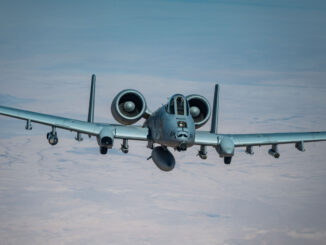 Kaman HH-43F Huskie (c/n 174, formerly 62-4547 of the United States Air Force – USAF), exhibited at Hubschraubermuseum Bückeburg (Bückeburg Helicopter Museum), June 2025.
Kaman HH-43F Huskie (c/n 174, formerly 62-4547 of the United States Air Force – USAF), exhibited at Hubschraubermuseum Bückeburg (Bückeburg Helicopter Museum), June 2025.
The HH-43 Huskie, one of the most interesting helicopters developed in the early 1950s, was designed by German aviation engineer Anton Flettner. During the Second World War, while working for the Third Reich, Flettner successfully created several rotorcraft, including the Fl 185 gyrodyne, the Fl 265 and Fl 282 Kolibri synchropters, as well as the Fl 339 reconnaissance helicopter.
At the end of the war, Flettner, like many other German scientists, was taken by the Allies and later transferred to the United States under the secret American intelligence programme codenamed Operation Paperclip. Shortly thereafter, the German pioneer of synchropter development became chief designer at Kaman Aircraft, a rotorcraft company established in 1945 by Charles Kaman.
In 1947, Kaman developed its first rotorcraft, designated K-125, which implemented Flettner’s double-rotor configuration. Two years later, in cooperation with Anton Flettner, the company produced two modernised variants of the rotorcraft, known as the K-190 and K-225. These aircraft attracted interest from the US Navy and the US Coast Guard, which purchased two examples of the K-225 and one example of the K-190, respectively.
In 1951, one K-225 variant was fitted with a Boeing T50 (company designation 502) turboshaft engine and became the first rotorcraft in aviation history to be powered by a gas turbine.
In the following years, the US Navy began collaborating with Kaman on the development of another experimental rotorcraft. The new helicopter, designated HTK-1, made its maiden flight on 21st April 1953.
Initially powered by a single 240 hp Lycoming O-435 piston engine, the aircraft was soon re-engined with two Boeing T50-BO-2 units, generating a total output of 380 hp. As a result, the HTK-1 became the world’s first twin-turbine-powered helicopter. During its further development, the rotorcraft was also equipped with a more powerful Pratt & Whitney R-1340 Wasp radial piston engine, producing 600 hp.
In 1958, the helicopter was officially introduced into operational service with the USAF as the H-43A Huskie. Shortly afterwards, it was also approved for service with the US Navy and US Marine Corps, where it was used in training, observation and utility roles, designated HTK, HOK and HUK respectively.
Nevertheless, the USAF required even more powerful helicopters and eventually received two new versions of the Huskie, both powered by a single Lycoming T53 turboshaft engine. The first of these, designated H-43B, entered service in 1959 and was powered by an 860 hp version of the aforementioned powerplant. It was followed by the HH-43F, equipped with a slightly less powerful variant, generating 852 hp.
In 1962, following the restructuring of the US armed forces, the official designations of the military Kaman helicopters were changed to UH-43C (HUK-1), OH-43D (HOK-1), TH-43E (HTK-1), HH-43A (H-43A), and HH-43B (H-43B).
Due to being powered by a variety of engines in both single- and twin-engine configurations, the Huskie featured a wide range of different tail and fin designs. However, it always retained the basic Flettner configuration, with two counter-rotating, side-by-side mounted, intermeshing two-bladed rotors.
The Huskie saw operational use during the Vietnam War, primarily in utility and search and rescue missions. It was the HH-43 that, in March 1965, carried out the first combat medevac operation. Huskies operated by the USAF were also used for base rescue services and firefighting duties, equipped with airborne fire suppression kits.
In addition to their service with the US armed forces, Huskies were also acquired by Burma, Colombia, Iran, Morocco, Pakistan and Thailand. A total of 370 examples were produced, and the type remained in active service until the early 1970s in the United States, and until the mid-1980s in other countries.
The HH-43F featured in our Photo of the Week series was operated by the USAF, bearing tail number 62-4547. In late 1973, the rotorcraft was retired from active service at Ramstein Air Force Base and, the following year, was transferred to the Bückeburg Helicopter Museum, where it remains on display to this day.



